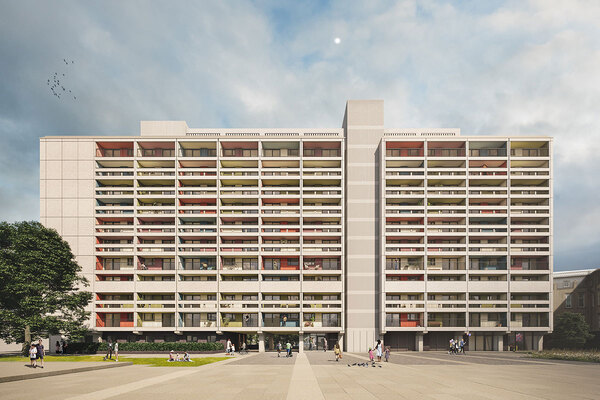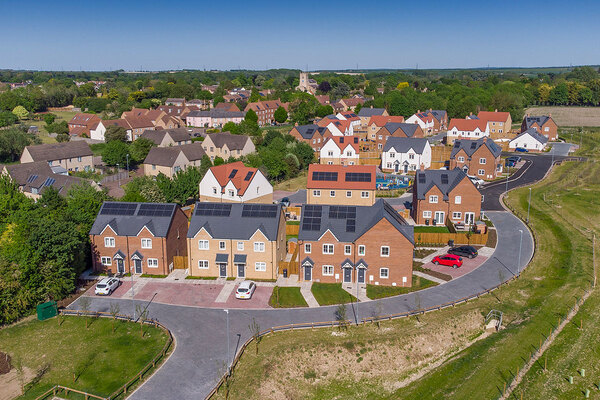How we transformed Victorian and Edwardian social homes with internal wall insulation
Steve Page, operations director at Durkan Regen, explains how his team has been renovating L&Q’s ageing Victorian and Edwardian housing stock at scale, taking a whole home approach to regeneration.
Victorian and Edwardian homes are an important and much-loved part of the UK’s architectural landscape, with many owned and managed by local authorities and housing associations.
A significant number, however, are now in need of regeneration. Even when well maintained, an original Victorian or Edwardian home can often be cold, draughty and prone to problems such as damp and mould. For residents, this means higher energy bills – even fuel poverty – and a poorer quality of living.
The need to improve this category of housing stock as it ages is therefore front of mind for housing associations and councils, who are increasingly looking for the best solution that can be delivered at scale. The key rests with a holistic approach and innovation.
At Durkan Regen, we’ve entered into a 15-year framework with L&Q specifically targeting the decarbonisation of its Victorian and Edwardian housing stock. This includes fitting each property with a fully refurbished kitchen and bathroom as well as installing internal wall insulation (IWI). As is the nature of these properties, however, our work often uncovers other challenges such as damp and mould, which our team works to remediate.
For residents, a whole home approach to regeneration like this is much more appealing. We’re finding that they are more likely to agree to the IWI work, as it gives them a whole new refurbished space to call home complete with a new kitchen and bathroom.
Once complete, each retrofit provides L&Q with an EPC C rated home for their residents that is unlikely to need further work for upwards of 25 years.
So, what’s involved, and why does it work so well?
Making the right choice
External wall insulation is often the default for housing associations and local authorities that have residents in situ, as it doesn’t typically require contractors to enter the property.
When it comes to Victorian and Edwardian properties however, external wall insulation is far from ideal. It often requires planning permission due to the archetypal bay windows, and almost always needs scaffolding and alterations to the roof, soffits and drains, which in turn can result in expensive groundworks. Not only does this make it a cost and time intensive option for this home type, it also misses a critical opportunity to pick up and address wider issues such as damp and mould in the process. Working with L&Q, we therefore recommended it install IWI in its Victorian and Edwardian properties.
Internal wall insulation in action
The work starts by first applying a vapour barrier over the internal walls. This allows the property to breathe without letting any dampness in, helping prevent mould and condensation.
Vapour barrier applied to walls
Then, 75mm insulation panels are fitted within an aluminium frame. Importantly, all panels are pre-cut to size away from site, which makes for easier installation once in the property. These panels are then plastered to a smooth finish and decorated. Care is taken when moving and covering furniture, to make sure that the home is fully protected while we work.
Aluminium frame
To finish the installation, electrical switches, sockets and radiators are extended forward to meet the panelling. All components are tested in line with electrical installation guidelines, for safety and compliance.
Once completed, residents are noticing a big difference. Their homes are cooler in the summer and, through improved heat retention, much warmer in the winter. In turn, this means lower energy bills throughout the year. The increased airflow created by Decentralised Mechanical Extract Ventilation (DMEV) fans, which are designed and fitted alongside the IWI system, also improves air quality, contributing to more comfortable living.
The combination of kitchen and bathroom refits alongside this insulation process is not an insignificant undertaking, but Durkan Regen’s experienced resident liaison officers have been working with tenants to communicate the benefits of these works and keep them updated at every stage.
An installed system, boarded and ready for plaster
Accessing funding
Decarbonising ageing stock is a significant investment. It’s important that local authorities and housing associations make use of available government funding, wherever possible, to support regeneration.
In this case, working with L&Q, we are funding our decarbonisation work through the Warm Homes Social Housing Fund - Wave 3 – a dedicated government fund for local authorities and housing associations to help them increase the energy efficiency of their housing stock in England.
Local authorities and housing associations accessing these funds will need to work closely with regeneration specialists to ensure investment is used to its best possible effect if the UK is to ensure safe, warm, and decent homes for the future. A wholesale, holistic approach to decarbonisation utilising the latest technologies can help ensure every opportunity is maximised.



